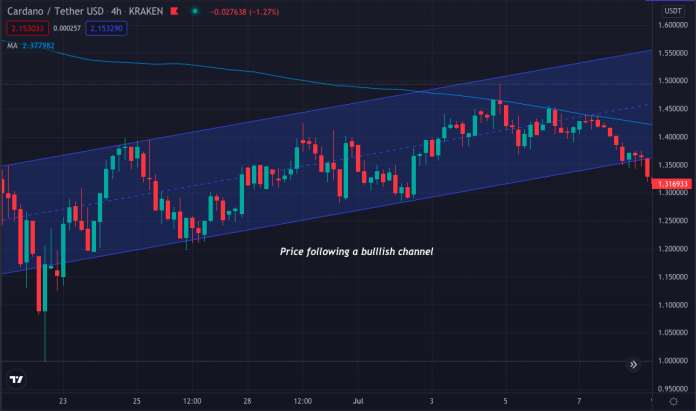
Creating an effective CFD trading strategy is a crucial part of successful trading. It’s essential to have a well-defined plan to use to determine when to enter, exit, and adjust positions in the market.
This article will provide an overview of what it takes to create an effective CFD trading strategy, including defining your goals and objectives, identifying suitable markets and instruments, developing entry and exit criteria, managing risk appropriately, and testing the strategy before implementing it.
Defining your goals & objectives
Defining your goals and objectives is the first step in creating an effective CFD trading strategy. What do you want to achieve with your trading? Are you looking to generate income or build wealth? Do you want to focus on short-term or long-term gains?
Knowing your goals will help you create the best trading strategy for your needs. You must also consider your risk tolerance and the amount of capital you have to invest.
Identifying suitable markets & instruments
Once you have defined your goals and objectives, it’s time to find the right markets and instruments for trading CFDs. It would help if you considered factors such as liquidity, volatility, market sentiment, and commission costs. Analyse the markets and instruments available to identify which ones fit best with your trading style and preferences.
Another essential factor to consider is the margin requirements, which will determine the capital you need to open and maintain a position. You should also research the different CFD types and understand how they work. A CFD broker can also help you find markets if you are unsure.
Developing entry & exit criteria
Another critical aspect of creating an effective CFD trading strategy is developing entry and exit criteria. This involves setting rules for when to enter a position in the market, how much to invest, and when to exit a position. These rules should be based on your goals, objectives, and market analysis so that you are making informed decisions about trades.
Additionally, it would help if you created rules for managing the risk of your positions so that you are not overexposed to losses. By having straightforward entry and exit criteria, you can be sure that your trading decisions are based on sound analysis.
Managing risk properly
When trading CFDs, it’s essential to manage risk appropriately. This includes setting stop-losses and taking profits at predetermined levels, ensuring proper diversification of investments, and using leverage responsibly. By appropriately managing risk, you can minimise losses while increasing the likelihood of achieving your goals with your CFD trading strategy.
Some risk management strategies include employing hedging techniques, using position sizing to manage exposure, and utilising proper risk/reward ratios. Risk management should be tailored to your trading style, preferences, and goals.
Testing the strategy
Before implementing any CFD trading strategy, it’s essential to test it first. Testing involves backtesting the strategy using historical data and paper trading (simulated trading) to get an idea of how the strategy would perform in a live market environment. This will help you identify any weaknesses or issues with the strategy and make necessary adjustments before implementing it. Testing also allows you to practise and hone your skills as a trader.
Keep your emotions in check
Lastly, keeping your emotions in check when trading CFDs is essential. Greed, fear, and other emotions can cloud judgement and lead to costly mistakes. Stay focused on the market fundamentals and follow your trading plan consistently.
It is easy to get distracted or tempted to make rash decisions when trading, but if you remain disciplined and follow your plan, you will be well on your way to achieving success with your CFD trading strategy. One way to avoid emotional trading is to use automated tools and software that can help manage your trades according to predetermined parameters.
All in all
Creating an effective CFD trading strategy is essential for success in the markets. It involves defining your goals and objectives, identifying suitable markets and instruments, developing entry and exit criteria, managing risk appropriately, and testing the strategy before implementation. Following these steps, you can create a trading plan that fits your needs and helps you achieve your financial goals.
With these insights into creating an effective CFD trading strategy, you are now better equipped to formulate one that works best for you.





More Stories
Algorithmic Forex Trading with Low-Latency Execution Techniques
Algorithmic Forex Trading with Low-Latency Execution Techniques: Speed, Precision, and Profit
Exploring Forex Options Trading